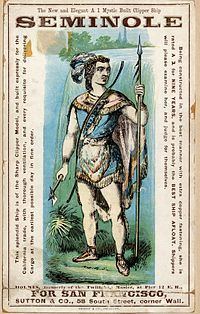75 300 Date 15 January 1838 | 5 killed
22 wounded unknown | |
 | ||
Result Seminole victory, United States forces retreated. Location Jupiter, Florida, United States Similar Second Seminole War, Battle of Wahoo Swamp, Battle of Lake Okeechobee, Dade Massacre, Battle of Negro Fort | ||
The Battle of Jupiter Inlet occurred on January 15, 1838, between the Seminole Indians - Seminole Negro and the United States Navy. This was the first of a series of battles led by the US Navy in the area, also referred to as the First Battle of Loxahatchee. The battle started when Lt. Levin Powell led an expedition of 200 soldiers, sailors and marines, down the east coast of Florida. The Navy spotted a trail alongside the Jupiter Inlet, and seventy-five men were landed to find the Seminole camp nearby. The camp was led by Sam Jones, Ar-pi-uck-i, the spiritual medicine and war chief of the Miccosukee and Seminole people during the war. The officers that advanced on the camp were outnumbered and ambushed. After a long fight, the US retreated with five men killed in action and about twenty others wounded. Ltn. Powell was one of those killed in battle.
Contents
Background
After the American Revolution, Spain regained control of Florida from Britain as part of the Treaty of Paris, and the Seminoles set up farms and acquired land grants from the Spanish. At the same time, because the state was in Spanish control, escaped slaves took advantage of the treaty and were found refugee in Florida. These two developments pushed the U.S. to begin the First Seminole War (1817–1818) on the Florida-Georgia line, which pushed the Seminoles further south.
In May 1832, the Treaty of Payne's Landing required Indians to forfeit their land and move west within a three-year window. In 1835, the U.S. Army returned to Florida to enforce the treaty and found the Indians prepared to fight.
Results
The Battle of Jupiter Inlet led the U.S. to explore the area surrounding the inlet. The crew returned nine days later under the command of Thomas S. Jesup, with the help of The Tennessee Volunteers, led by Major William Lauderdale. Three hundred Seminoles met the soldiers on the banks of the Loxahatchee River, just west of the Jupiter Inlet, in the last battle of the Second Seminole War, the Battle of the Loxahatchee River. After the battle, General Jesup petitioned to allow the Seminoles to remain in the Everglades and end the war. His request was denied and on January 25, 1838, General Thomas S. Jesup was forced to establish Fort Jupiter, where 600 Seminoles were captured and held under a white flag truce.
Notable People
Joseph E. Johnston went ashore during the Battle of Jupiter and claims that there were "no less than 30 bullet holes" in his clothing, with one bullet cutting his scalp, leaving him with a scar. Because Ltn. Levin Powell was killed in action, on July 7, 1838 Johnston was given a brevet promotion to captain for his actions at the Battle of the Jupiter Inlet.
Thomas Jesup was an American military officer known as the "Father of the Modern Quartermaster Corps." His military career spanned 52 years, starting in the War of 1812 and ending after 42 years as Quartermaster General. In 1836, President Andrew Jackson detached him from his title as Quartermaster General. First, to deal with the Creek tribe in Georgia and Alabama and then to assume command of all U.S. troops in Florida during the Second Seminole War.
Sam Jones.
